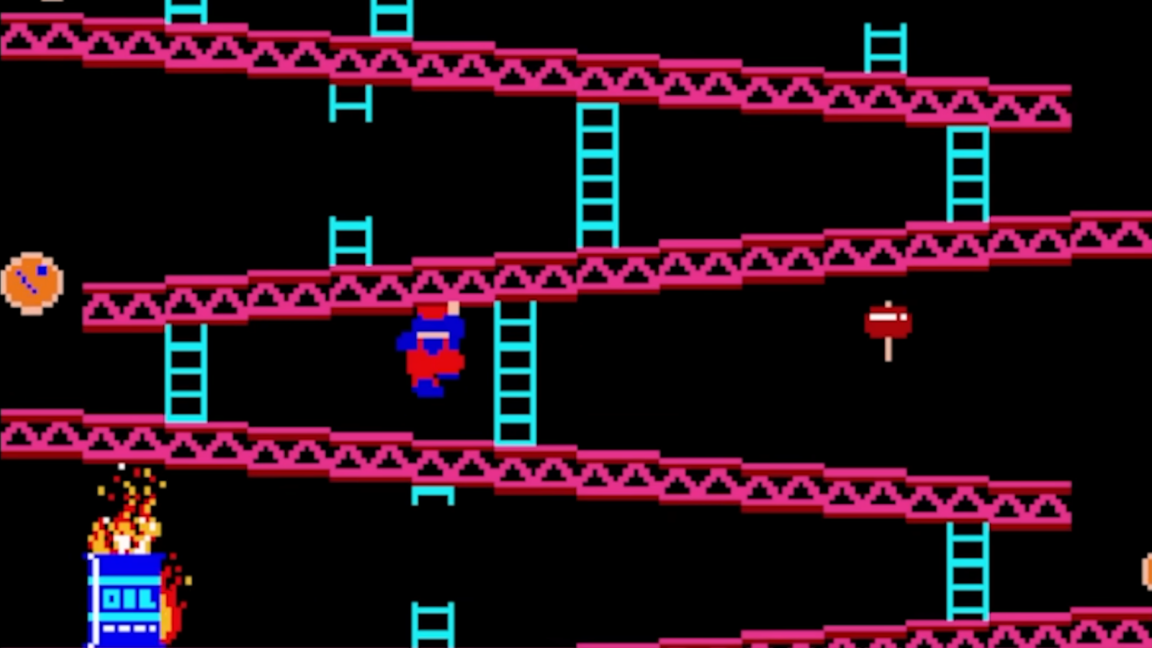
Donkey Kongs famed kill screen has been cleared for the first time
arstechnica.com
killing the kill screen Donkey Kongs famed kill screen has been cleared for the first time New method exploits a ladder-climbing glitch, emulator tools, and a bit of luck. Kyle Orland Feb 7, 2025 1:01 pm | 3 Nothing to see here, just Mario climbing up a perfectly normal invisible ladder. Credit: Kosmic Nothing to see here, just Mario climbing up a perfectly normal invisible ladder. Credit: Kosmic Story textSizeSmallStandardLargeWidth *StandardWideLinksStandardOrange* Subscribers only Learn moreIf you watched the 2007 documentary King of Kong or followed the controversy surrounding score-chaser Billy Mitchell, you know all about Donkey Kong's famous kill screen. For over four decades, no one was able to pass the game's 117th screen (aka level 22-1) due to a glitch in the game's bonus timer that kills Mario well before he can reach the top of the stage's girders.That was true until last weekend, when Mario speedrunner Kosmic shared the news that he had passed the kill screen using a combination of frame-perfect emulator inputs, a well-known ladder movement glitch, and a bit of luck. And even though Kosmic's trick is functionally impossible to pull off with human reflexes on real hardware, the method shows how the game's seemingly insurmountable kill screen actually can be overcome without modifying the code on an official Donkey Kong arcade board. Kosmic describes the journey that led to his kill screen defeat. Breaking the broken ladderDonkey Kong's kill screen is a side effect of the limited 8-bit register the game uses when calculating the two largest digits of a level's Bonus Timer (which doubles as the overall timer for each screen). At level 22, this calculation makes the register overflow past 256 and back down to 4, giving Mario just a few seconds to complete the stage before instant death.To get around this glitched timer, Kosmic made use of another glitch known as the broken ladder. After Mario reaches the top of the climbable portion of a broken ladder, you can still nudge him upward by pointing the joystick down for exactly four frames and then up for the fifth frame. This precise scooching method ignores the usual checks for the broken ladder section or dismounting on the floor above, letting Mario continue climbing indefinitely.By repeating this broken ladder glitch perfectly dozens of times in a row, Mario can quickly reach the top of the screen, where the game will register the level as completed. That degree of precise, repeated frame-perfect input is practically impossible to pull off consistently with human hands, but the trick can be repeated easily by using an emulator to advance the game one frame at a time. A short emulator-aided demonstration of how the broken ladder glitch works (not shown: the dozens of frame-perfect inputs needed to pull it off). Better to be lucky than to be goodWhile players have theorized about using the broken ladder glitch to pass the kill screen for years, it initially seemed like even this glitched shortcut was too slow for the short kill screen timer. Yet when Kosmic attempted the same trick using his own emulator-assisted setup recently, he says he was able to complete the level on his first try. What gives?As it turns out, Kosmic was the beneficiary of some significant luck. Basically, every time Donkey Kong throws a barrel, there is a 1 in 32 chance that he will wait an extra half second or so before throwing the next barrel (this random process is explained in way too much detail in this Pastebin). Since the game's bonus timer only ticks down when Donkey Kong actually throws a barrel, the semi-rare delay can give Mario the crucial extra frames he needs to reach the top of the kill screen using the broken ladder glitch.Funnily enough, this randomized barrel-throwing delay can theoretically repeat indefinitely, provided the game's randomizer picks the same lucky 1-in-32 sequence over and over again. If Donkey Kong decides to delay his barrel throw about 19 times in a row, Mario would actually be able to complete the kill screen normally, without the broken ladder glitch (and without facing many barrels, even). Of course, the chances of that happening on unmodified arcade hardware are nearly 1 in 40 octillion (1 in 32^19, to be precise), so don't count on encountering it in the wild any time soon. Mario dies on level 22-6, which Kosmic now considers the "true" Donkey Kong kill screen. Credit: Kosmic Mario dies on level 22-6, which Kosmic now considers the "true" Donkey Kong kill screen. Credit: Kosmic With the ladder glitch, though, Kosmic's emulator-assisted run needed significantly less luck to pass the kill screen at 22-1. He was even able to push the game past the next four stages (including previously unseen spring and pie factory screens) to reach level 22-6.Kosmic calls that stage the game's true kill screen, as there's currently no known way for Mario to remove all eight rivets quickly enough to overcome the glitch-shortened timer, even with emulator assistance. Then again, for decades, players assumed there was no way to complete level 22-1, either. Maybe someone will figure out a clever method for beating this new kill screen with 40 more years of sustained effort.Kyle OrlandSenior Gaming EditorKyle OrlandSenior Gaming Editor Kyle Orland has been the Senior Gaming Editor at Ars Technica since 2012, writing primarily about the business, tech, and culture behind video games. He has journalism and computer science degrees from University of Maryland. He once wrote a whole book about Minesweeper. 3 Comments
0 Комментарии
·0 Поделились
·72 Просмотры


